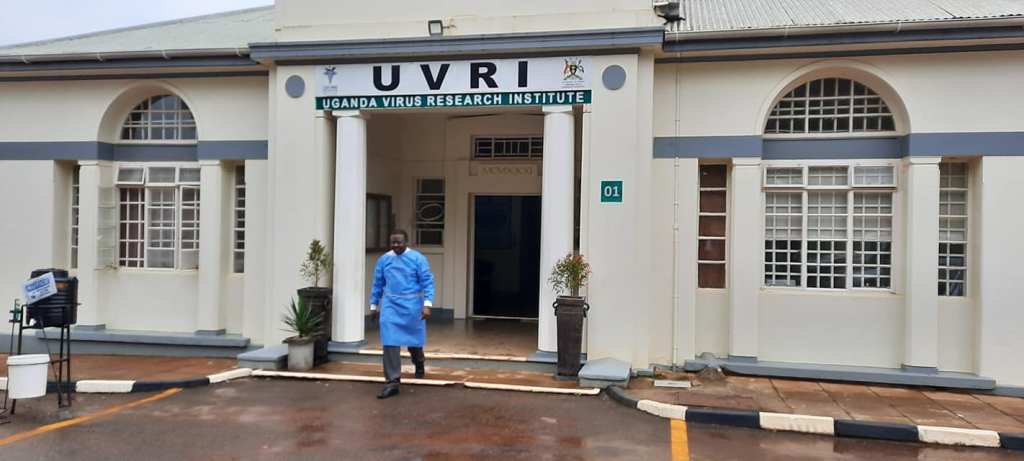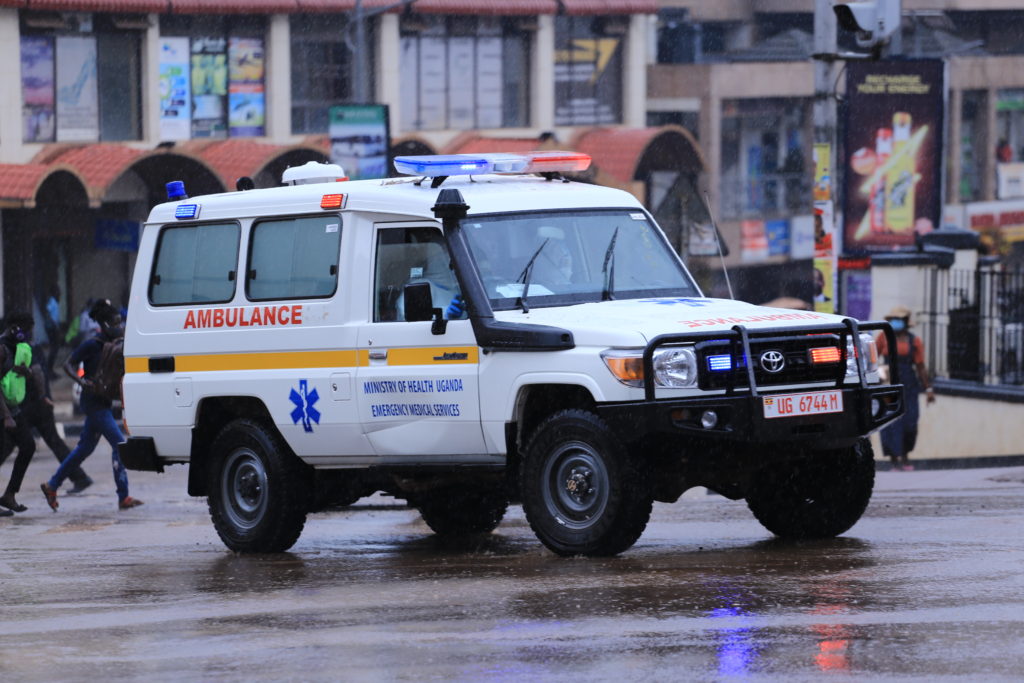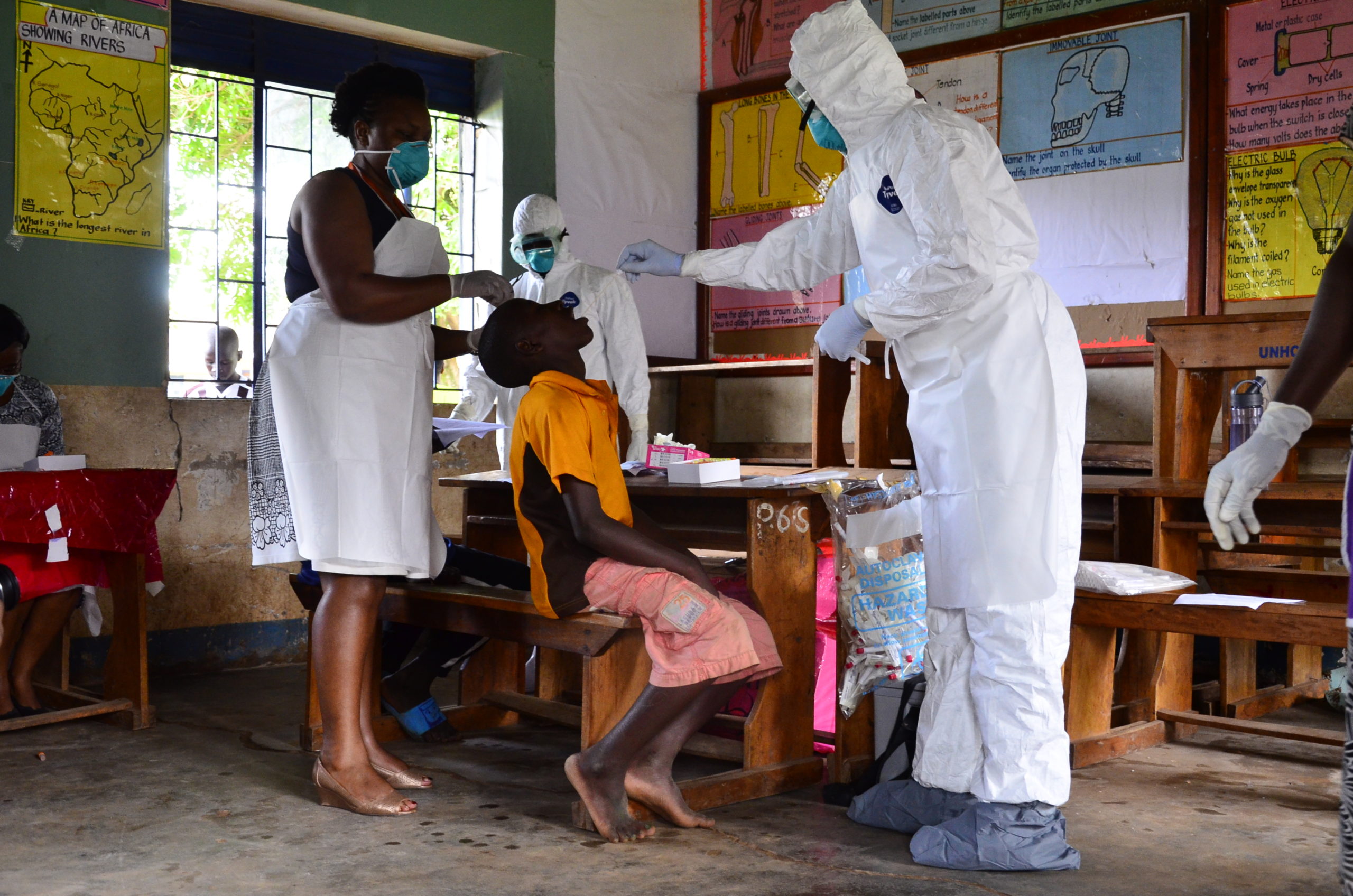By: Evelyn Lirri
July 21 marked a notable date in Uganda’s fight against the COVID-19 pandemic. On this date, the country registered its first death from the virus–which came exactly four months after the first positive case was recorded in the country.
The victim, a 34-year-old woman from the eastern Uganda district of Namisindwa had initially been diagnosed with severe pneumonia and admitted to a health centre III facility. She later presented with symptoms common with COVID-19. Her diagnosis was only confirmed after her death, raising the critical question and challenge that many African countries continue to grapple with in the face of the global pandemic: how to trace and get as many people tested for the virus.
Based on analysis of daily updates from the Ministry of Health, the number of COVID-19 tests conducted in Uganda averages 3,000 per day.
Cumulatively, over 370,000 tests have been conducted since March when the first case of the disease was registered in the country.
Solid contact tracing, testing and case management are some of the critical measures that countries need to have in place in order to control the fast spread of the COVID-19 virus, according to guidelines issued by the World Health Organisation.
The reasoning behind this approach is based on the premise that when an individual is confirmed positive for coronavirus, health workers should be in position to identify, test and isolate all the people who came into contact with the infected person. It takes between 2-14 days after exposure to the virus for a person to show any symptoms.

“The goal of tracing and testing is to stop the chain of transmission among the population before it spreads,” says Bernard Lubwama, a senior epidemiologist at the Ministry of Health.
Once a positive case is detected, Lubwama says the ministry has an already established efficient contact tracing and identification mechanism to find the people who were in contact with the positive case. These contacts are then followed up and tested twice within a 14-day period, during which they should test positive or negative. Those who test positive are then isolated in government designated centres to minimize their risk of spreading the virus.
Because the Ministry of Health test-and-trace approach started right after the first COVID-19 case was registered in the country, Lubwama says this gave it a better head-start at ensuring that the virus did not spread quickly in the general population.
Although at the beginning a significant number of the tests were being conducted among returning travelers from abroad, truck drivers and people living along the various border points of entry, where early cases of the disease were concentrated, a surge in infections in recent weeks among the general population has seen more testing happen in the communities through alerts and contact tracing.
Despite the challenge of rising infections, Lubwama says Uganda’s testing and contact tracing record is still impressive on the African continent.
It is ranked as one of 11 countries that account for about 80 per cent of the continent’s total tests conducted so far, according to the UK based project, Our World in Data, that collates COVID-19 information globally. Other countries are South Africa, Morocco, Ethiopia, Egypt, Ghana, Kenya, Nigeria, Rwanda, Mauritius and Cameroon.

Uganda’s expertise and capacity in tracing and testing for diseases such as Ebola is contributing to its ability to identify and manage cases effectively, notes Lubwama.
According to the latest figures from the Ministry of Health, there are 2,928 confirmed cases of COVID-19 in Uganda, with recoveries standing at 1,288. The number of deaths so far is 30.
Despite the recent sharp rise in cases, Uganda’s infection rate is still less than one per cent of the population, the ministry says.
“We already have strong capacity in both community and facility based surveillance, alert management and rapid response says Lubwama. He adds that on average it takes between 48 to 72 hours to trace and test contacts.
“At least 85 per cent of samples reach the testing facilities within 24 hours,” he adds.
The country’s public testing labs for COVID-19 include the Uganda Virus Research Institute, Makerere University Hospital, the National Health Laboratory Services, the Infectious Diseases Research Collaboration in Tororo, Gulu University, the Uganda Virus Research Institute Plague Laboratory-Arua, Rakai Health Sciences Laboratory and the Fort Portal Regional Referral Hospital.
Three private labs—Medipal International Hospital, Lancet and MBN Laboratories have also been accredited to carryout tests for individuals who want to know their status, as the ministry of health says its testing service is now restricted to only people who present to health facilities with COVID-19 symptoms, contacts of positive cases, and frontline health workers.
Yet with the increasing cases of COVID-19 in the community—enabled by the easing of lockdown measures, and which experts predict would overstretch the already struggling healthcare system—testing and tracing more cases will remain critical elements. In a recent study, scientists from Makerere University warned that releasing up to 75 per cent of the population from lockdown before October would lead to more than 10,000 infections.
“When lockdowns are hurriedly lifted to a 75 per cent susceptibility activity level, the yet-to-be detectable cases in the community, no matter how few have the potential to start a second and more disastrous epidemic wave,” the scientists warned.
As one of the recommendations, they noted that enhanced surveillance, contact tracing, testing and ensuring a phased approach to easing the lockdown would help the health system manage any potential challenge that arises.

“Contact tracing also helps to remove latently infected individuals from the community before they become infectious. By ensuring that after two months twice as many latently infected individuals are traced and all infectious individuals are traced within one day—as was done for truck drivers, the 52 per cent of peak hospitalization needs and 83 per cent of undetected cases would be averted,” they wrote.
Prof. Joseph Y.T Mugisha, the Principal Investigator of the study says because infections have already spread into the communities, a second lockdown would not be the best solution at this point to control the spread. “If everybody masked 100 per cent, you would mitigate some of the worst effects of the virus,” he says.
In the meantime, the government is currently undertaking a second rapid assessment survey it hopes will help determine the extent of community transmission of COVID-19 and possible risk factors.
Can innovative approaches fill the gaps?
While WHO underscores the importance of early identification, testing and isolating positive individuals, resource constraints also mean countries must become innovative if they want to reach and get more people tested. Countries such as Rwanda and Ghana are currently implementing pool testing as part of their response strategy. The approach involves testing a batch of samples from groups of individuals together, and then testing individuals only if a particular batch returns positive results. The advantage of this approach, experts say, is that less testing reagents are used in the process, while at the same time cutting short the time spent waiting for results.
On top of pool testing, mobile application technologies could also offer cost-effective solutions to facilitate the faster tracing of cases, according to experts.
“Technology is definitely one-way health workers could reduce the contact tracing time in the field,” says Gregory Toskin, a cyber security expert at Defining Technologies Limited, a tech company which has partnered with Mbegu Za Mapenduzi, a forum of health practitioners to develop a mobile tracing app for COVID-19 called the Covid-Tracer.
The app uses overlapped GPS and Bluetooth low-energy (LE) signal trails that allow individuals to check if they have crossed paths with someone who was later diagnosed with the virus.
Because it has the capacity to privately store an individual’s location and data, health workers are therefore assured of reliable contact tracing, while at the same time mapping infections accurately and anonymously.
The developers have donated the app to the Ministry of health and hope it can be adopted for use as an alternative way of tracing and reaching contacts faster, particularly in crowded urban settings where the risk of infection is high.
“It is more of a mitigation measure to ensure that those who have come into contact with a positive case can isolate and stay at home so they do not spread the disease,” Toskin notes.
But with no vaccine in sight yet, expanded testing, and tracing remains a big part of the control strategy for countries, and will contribute significantly to controlling the spread of the virus.


